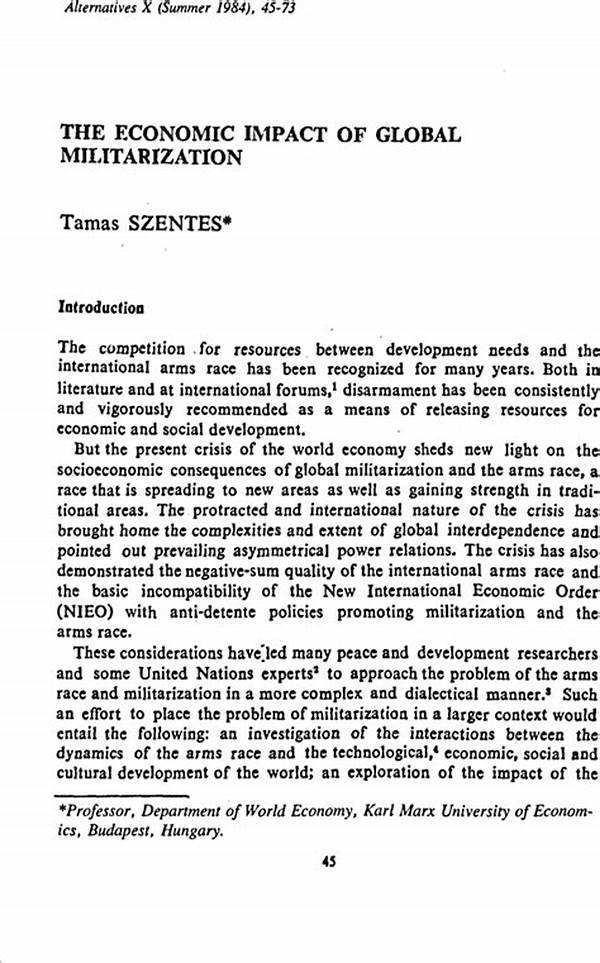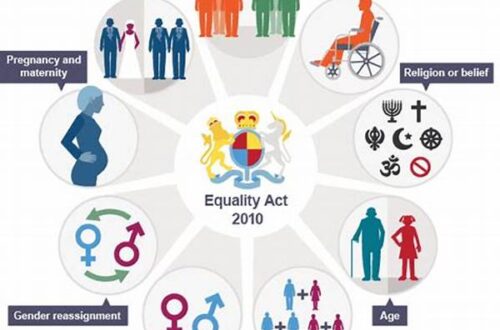Militarization has become an increasingly prevalent component of global society, influencing political dynamics and economic frameworks. The process entails the enhancement of military capabilities, investment in defense infrastructure, and incorporation of military technologies into civilian domains. While these developments can bolster national security and stimulate certain sectors of the economy, it is imperative to scrutinize the long-term economic impact of militarization. This comprehensive analysis aims to explore the multifaceted economic consequences of prolonged militarization, assessing both its advantageous and adverse effects.
Economic Resource Allocation
The long-term economic impact of militarization primarily manifests in the allocation of economic resources. Substantial fiscal budgets directed towards defense expenditures can lead to a diversion of resources from critical public sectors such as education, healthcare, and infrastructure development. Over time, this shift may result in the underfunding of essential services, causing societal disparities and economic disequilibrium. On a macroeconomic level, the prioritization of military expansion can influence national economic growth trajectories. Countries heavily investing in defense may achieve short-term economic booms through technological advancements and job creation within the defense industry. However, sustainable growth could be compromised if the nation becomes overly reliant on military spending, neglecting innovation and productivity improvements in other crucial sectors. Thus, the long-term economic impact of militarization necessitates a balanced consideration of defense needs and broader economic sustainability.
Socioeconomic Implications
1. The long-term economic impact of militarization includes potential shifts in labor markets, as emphasis on defense industries may alter job distribution.
2. Infrastructure investment may lag, affecting overall economic growth, as funds prioritize military objectives.
3. Public sectors, like education, may experience financial neglect due to military spending priorities, affecting societal development long-term.
4. Continuous militarization can influence national debt levels, burdening future generations with fiscal responsibilities tied to military expenditure.
5. Innovation in civilian sectors may be stunted if military technologies overshadow broader technological advancement.
Defense Industry Dynamics
The defense industry plays a crucial role in understanding the long-term economic impact of militarization. On one hand, the defense sector can be a significant growth driver, generating employment, technological innovations, and industrialization. The development and export of military technologies can enhance a nation’s global economic standing, establishing it as a major player in the international arms market. However, the defense industry is also susceptible to economic volatility and ethical considerations. Over-reliance on this sector creates economic vulnerabilities, as global political tension fluctuations can affect demand for military products. Additionally, the ethical responsibilities surrounding arms production and distribution complicate the economic benefits derived from this sector. Therefore, the defense industry exemplifies the intricate balance that must be maintained to minimize the long-term economic impact of militarization.
Political and Economic Interplay
1. Political agendas heavily influence the long-term economic impact of militarization, as defense budgets often reflect prevailing geopolitical tensions.
2. Economic policies shaped by militarization can result in austerity measures impacting the broader population.
3. The interplay between national security and economic stability influences investment climates, either encouraging or deterring foreign direct investment.
4. Militarization affects trade policies, as defense-related exports become a focal point but can also lead to trade imbalances.
5. Social welfare systems might encounter constrictions due to the financial emphasis on defense-related expenditures, impacting socio-economic equality.
6. Governments may prioritize defense contracts and arms sales over domestic economic diversification, limiting economic potential.
7. Energy resources may be diverted toward military needs, affecting prices and availability in civilian markets.
8. Militarization’s economic impact has ramifications on environmental policies, where military activities contribute to environmental degradation.
9. State investment in research and development may lean towards military applications, diverting focus from civilian technological progress.
10. Cultural and societal values may evolve under the influence of militarization, impacting economic behaviors and development models.
Environmental Considerations
The environmental dimension of the long-term economic impact of militarization is often under-discussed but holds significant importance. Military activities, ranging from exercises and base constructions to weapons testing and warfare, have substantial ecological footprints. These activities can lead to land degradation, water pollution, and biodiversity loss. As resources are allocated to address these environmental challenges, additional economic strains may ensue. Furthermore, environmental damage can disrupt agricultural productivity and local economies, particularly in regions heavily reliant on natural resources. Moreover, the development and testing of military technology often involves hazardous materials, posing risks to human health and the environment. The economic implications of mitigating such environmental impacts necessitate comprehensive assessments and proactive policy interventions to ensure responsible militarization and sustainable economic practices.
Global Economic Relations
In the global context, the long-term economic impact of militarization influences international economic relations. Countries frequently engaged in military alliances and arms trade agreements create intricate economic interdependencies. While such partnerships can enhance trade relations and economic stability, they also heighten global economic risks. Economic sanctioning, arms embargoes, and political tensions exacerbated by militarization can destabilize economies and disrupt international trade networks. Conversely, shared defense commitments can facilitate mutual economic growth and technological exchange. Balancing these complex dynamics requires strategic diplomacy and policy coordination among nations to mitigate adverse economic consequences while maximizing the positive impacts of militarization on global economic relations.
Conclusion
The long-term economic impact of militarization is a multifaceted phenomenon with profound implications for national and global economies. While militarization can act as a catalyst for technological advancement and economic stimulation within the defense industry, it also poses significant risks. The diversion of resources from vital public sectors, potential socioeconomic disparities, and ethical complexities associated with arms production highlight the need for careful consideration and strategic policy-making. Balancing defense needs with broader economic sustainability is paramount for minimizing adverse impacts and fostering resilient economic growth. Through comprehensive and collaborative approaches, nations can navigate the intricate interplay between military pursuits and economic prosperity in an increasingly militarized world.





